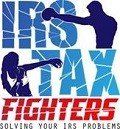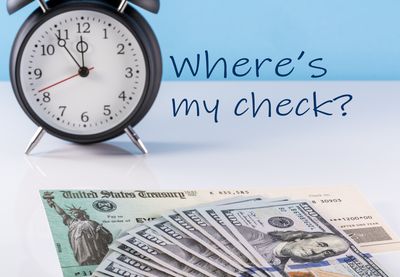All About the Stimulus Check (Economic Impact Payment)
The Coronavirus and the disease it causes, COVID-19, has wreaked havoc on our economy and our lives. In order to combat the negative effect it has had on the economy, the US government has enacted the CARES Act. The CARES Act provides for Economic Impact Payments which are commonly called stimulus checks.
The IRS is working on issuing payments as soon as possible to all who qualify. They are sending payments out now even though the Economic Impact Payment is really an advance payment of a 2020 credit that will appear on our 2020 tax return when we file them in 2021. The credit will reconcile what we received to what we should have received. If we were under-paid, we will get more payment via a larger refund. However, if we were over-paid, we will not have to pay it back because there is no provision in the CARES Act for repayment.
The Economic Impact Payment also is not subject to federal or state debt owed except child support. So, even if you owe the IRS or the state, you will get your full stimulus check. The IRS will not withhold it to pay off prior federal or state debt unless it is child support.
You can check the status of the payment by going to IRS.gov and clicking the rectangle labeled “Get My Payment.” The IRS is working to issue the payments as quickly as they can and the information changes as your payment goes through the payment process. Therefore, it is best to check the “Get My Payment” section on IRS.gov periodically for changes until you receive your payment. The things you can do with “Get My Payment” are:
1) Check your payment status
2) Confirm your payment type as either direct deposit or check
3) Enter your bank account information for direct deposit if the IRS doesn’t already have your direct deposit information and if the payment has not already been issued.
As the IRS moves through the payment process for your payment, certain sections of the “Get My Payment” will become available. For instance, the ability to enter your direct deposit information may not be available today, but it may be available tomorrow based upon how far along the IRS is in processing your payment.
If you have moved and fear that the IRS will mail your check to the wrong address, then filing a change of address with the US Post office may allow you to get your check at the correct address. However, the best way to ensure getting your check is to file a 2019 tax return with the correct mailing address and direct deposit information. If your 2019 tax return has already been filed and the information on the 2019 tax return has changed, unfortunately, the IRS will issue a payment based upon the information on the 2019 tax return.
The IRS is calculating the amount to pay each person depending on the most recent tax return filed, 2018 or 2019. The people who are eligible are:
1) U.S. citizens,
2) Permanent residents or
3) Qualifying resident alien
The payment amounts are $1,200 for individual or head of household filers, and $2,400 for married filing jointly if they are not a dependent of another taxpayer and have a work eligible Social Security number with adjusted gross income up to:
- $75,000 for individuals
- $112,500 for head of household filers and
- $150,000 for married couples filing joint returns
An additional $500 is provided for each dependent a taxpayer has that is under the age of 17 years old.
Taxpayers will receive a reduced payment if their Adjusted Gross Income (AGI) is between:
- $75,000 and $99,000 if their filing status was single or married filing separately
- 112,500 and $136,500 for head of household
- $150,000 and $198,000 if their filing status was married filing jointly
The amount of the reduced payment will be based upon the taxpayers specific adjusted gross income.
Eligible retirees and recipients of Social Security, Railroad Retirement, disability or veterans' benefits as well as taxpayers who do not make enough money to normally have to file a tax return will receive a payment. This also includes those who have no income, as well as those whose income comes entirely from certain benefit programs, such as Supplemental Security Income benefits.
Retirees who receive either Social Security retirement or Railroad Retirement benefits will also receive payments automatically in the manner in which they normally receive their monthly payments.
A person who normally does not have to file a tax return because their income is too low, can go to the IRS.gov webpage and click on the rectangle labeled “Non-Filers: Enter Payment Info Here” to provide the IRS with their payment information.
The Economic Impact Payment or stimulus checks are an attempt by the US government to alleviate the severe difficulties many people are facing due to COVID-19. The IRS is trying its best to get the payments to all who qualify as quickly as possible. The best way to monitor your individual payment status is to click the “Get My Payment” rectangle on www.irs.gov.
- Mon - Fri
- -
- Sat - Sun
- Appointment Only


